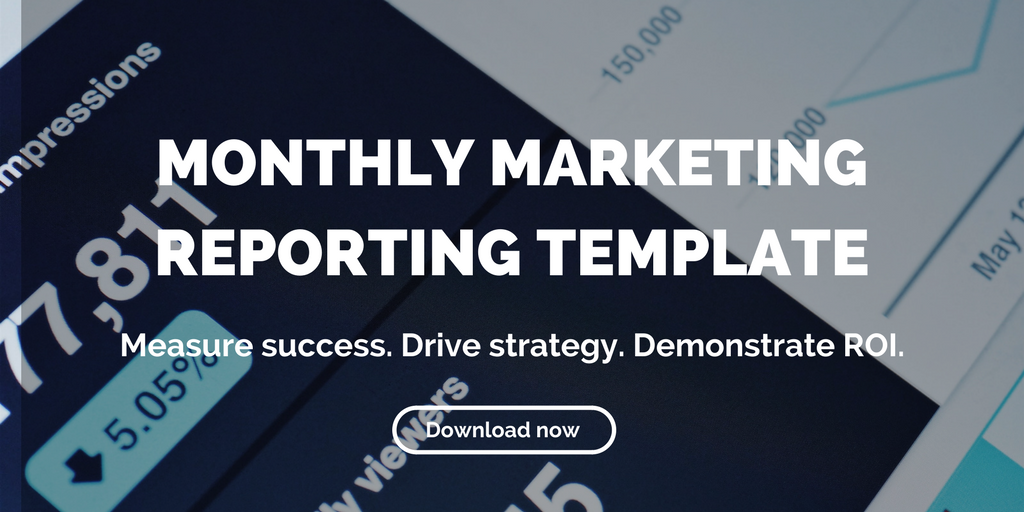Archive for Katie Russell

5 Creative Ways to Use Instagram Stories for your Luxury Real Estate Brand
Luxury real estate brands are capitalizing on Instagram Stories to highlight property features and give followers an inside look at what sets them apart.
Highlights:
- With such a highly visual platform comes the challenge of standing out from other luxury real estate brands.
- Stories helps boost reach and engagement by giving users ways to engage with your content.
- Don’t be afraid to make your content pop through filters on your images and videos, use fun fonts and bold text, and create slideshows that break your stories into parts.
Instagram is a natural fit for real estate marketing. And with the growing popularity of Instagram Stories, marketers are increasingly using this feature to highlight their properties and luxury real estate brand. When implemented as a part of a robust digital marketing strategy, Instagram Stories is an ideal place to showcase your latest projects.
But with such a highly visual platform comes the challenge of standing out from other luxury real estate brands. If you want to generate leads, increase ROI, and ultimately close deals, you’ll need to think outside of the box.
Here are five creative ways to use Instagram Stories for your luxury real estate brand
1. Go behind the scenes
Because of the informal feel of Instagram Stories, it’s a great place to highlight your luxury real estate brand and give viewers a behind-the-scenes look at your property. This intimate view into what makes your brand unique helps build engagement and brand loyalty.
Some ideas to showcase your luxury real estate brand include:
- Highlight premier features of your property
- Snap a picture or short video at local restaurants, bars, and events by your property
- Upload an image of an office brainstorm or staff meeting
- Feature new marketing ideas or things your staff are working on
2. Engage
I recently read that Instagram algorithms can make organic reach difficult, which means that engagement can be a challenge. But Stories helps boost reach and engagement by giving users ways to interact with your content. Ask viewers a question or create a poll to encourage audiences to share thoughts with your brand. What’s your favorite feature in the new penthouse unit? What color should we paint our office door? What videos do you find most appealing. And when audiences respond to your questions or polls, make sure you re-engage with them.
3. Highlights
Looking to get more shelf life out of your Instagram Stories? Try using the Highlights tool.
“Instagram Stories Highlights can live permanently on your profile. They’re like curated collections of Instagram Stories that your followers — both old and new — can tap into and watch any time they like.
“And because of their prime location directly under your bio and above your Instagram feed, it’s the perfect place to direct followers to your most valuable and interesting content,” writes Benjamin Chacon for Later.com.
Highlights is a great tool for gathering several of your most engaged stories and blog posts, and organizing them by topic. For example, your luxury real estate brand can create different highlights for property features, neighborhood information, and office culture. Viewers can easily sort through your content based on their personal needs.
4. Be visual
56% of marketers said they use visuals in their content almost 100% of the time. Instagram called the feature “Stories” for a reason. Don’t be afraid to make your content pop through filters on your images and videos, use fun fonts and bold text, and create slideshows that break your stories into parts. Visual content has significantly higher engagement rates, so get your camera ready.
5. Luxury branding
Instagram Stories leverages two things today’s buyers love: beautiful images and engaging videos. The tool extends a brand’s audience, shows the ins and outs of what makes your brand unique and promotes engagement with your Stories, as well as your Instagram posts. All of these elements develop brand awareness and, hopefully, brand loyalty.
Final thoughts
I’ve heard some luxury real estate brands are hesitant to use Instagram Stories, because of the informal vibe of the tool, something that’s not usually synonymous with luxury real estate. But as Instagram continues to grow in popularity, it’s important for brands to follow their audiences.
Remember, Instagram Stories is just one part of your dynamic digital marketing strategy. Have fun with the tool, experiment with posts including videos and pictures, and see what followers engage with the most. You might be surprised how well your Stories perform.
Still hesitant about getting started? Let us help.
Related posts:
- Measure Social Media Success in Terms of Potential, not Dollar Amount
- How to Use Social Media Hashtags in Real Estate Marketing
- How to Use Instagram for Real Estate Marketing
Archive for Katie Russell

5 Social Media Stats for Real Estate Marketers
Social media is a natural fit for real estate marketing. Here are five social media stats that prove your real estate brand needs to be active on social media.
Highlights:
- 3.5 billion people will use social media networks this year.
- Real estate marketers can take advantage of detailed targeting available through Facebook.
- Real estate marketers who are succeeding on social media are finding innovative and creative ways to relate to users and showcase their property.
Social media has changed the world as we know it. From connecting with old friends to up–to–the–minute news coverage, social platforms are a constant in 2019. In fact, it’s estimated that 3.5 billion people will use social media networks this year.
With those kinds of numbers, it’s easy to understand why businesses are heavily investing in digital marketing on social platforms. Consider some more social media stats: a recent survey found that 73% of small businesses are investing in social media marketing.
We’ve talked a lot about the importance of social advertising and we’re sticking by it. The combination of paid and organic advertising on sites like LinkedIn and Twitter can help get your property in front of the right audiences.
We know that social media posts are time–consuming, whether you’re creating original content or curating posts. This can play a big role in marketers sticking to more traditional advertising methods. But if you’re looking to target specific audiences and run ads that speak to them directly, the social media stats speak for themselves.
Here are 5 social media stats and how they can affect your digital marketing strategy.
1. 68% of U.S. adults are Facebook users
Despite all the headlines in the last year, Facebook is still the most popular social media platform out there. And marketers shouldn’t ignore this platform when advertising properties. Aside from Facebook’s popularity, real estate marketers can take advantage of detailed targeting available through the social platform’s paid advertising options. After determining the goal of your campaign, you can set key targeting options and make sure your ads are getting in front of the right audience.
2. Over 90% of Millennials use social media (and 77% of Generation X’ers)
Millennials use social media more than any other age group and the majority of them access social media on their phones. This is crucial information for real estate marketers trying to understand the buyer’s journey and determining what platforms will work best for their audience. For example, are they trying to lease apartments near a college or university? Knowing that Instagram is the fastest growing platform or that messaging apps are the most popular form of communication amongst millennials is key.
3. An average of 143 minutes a day is spent on social networks and messaging
According to a survey by Digital Information World, internet users are now spending an average of 2 hours and 22 minutes per day on social networking and messaging platforms. And that’s a lot of opportunity for marketers to showcase properties. Don’t miss out on organic (and paid) searches for properties. Make sure to post your blogs, photos, and virtual tours to your social media pages to expand your reach.
4. 73% of marketers believe that their efforts through social media marketing have been‘somewhat effective’ or ‘very effective’ for their business
Social media is one of the most cost-effective ways to market your property, engage with audiences, and establish brand loyalty among customers. Tracking your social media efforts is key to optimizing your strategy and tweaking your plan to increase performance. Gauge the effectiveness of your social media strategy using these data points that reflect your digital marketing objectives.
5. 54% of social browsers use social media to research products
Social media is all about engagement. Users don’t want to engage with brands that are pushing their properties. Users want informative, interesting, and, yes, even fun content. Real estate marketers who succeed on social media are finding innovative and creative ways to relate to users and showcase their property so that social browsers are drawn to your content.
These social media stats prove excelling at social media could pay off for your real estate brand. What does it take to become a whiz? Keep reading our blog or contact us to learn more.
Related posts:
- How to Increase Leads with Chatbots
- Infographic: Best Video Distribution Channels for Real Estate Marketing
- 5 Effective Ways to Use Instagram for Your Luxury Real Estate Brand
Archive for Katie Russell

Real Estate Marketing Leads: 4 Myths (and How to Disprove Them)
Don’t let these four myths get in the way of creating an effective strategy for capturing real estate leads.
Highlights:
- As you start to develop your lead-capture strategy, don’t let certain myths and misunderstandings derail your efforts.
- If you confine yourself to one or even two methods of finding leads, you’re unnecessarily limiting your potential.
- The better you understand your prospects, the more you’ll be able to meet their needs and turn them into customers.
One of the most pressing challenges for all real estate professionals is to get a steady supply of real estate leads. But as you start to develop your lead-capture strategy, don’t let certain myths and misunderstandings derail your efforts.
Let’s look at four of the top myths when it comes to real estate leads.
Myth #1: Real estate leads that don’t buy immediately are worthless
It can be tempting to fall into black-and-white thinking when it comes to leads. When prospects don’t show an immediate interest in making a purchase, you might dismiss them as dead leads. That’s a mistake in any field, but especially in the realm of real estate. The only leads that are truly dead or worthless are ones where you have no accurate contact information, or they have specifically told you not to contact them again.
Just because a lead doesn’t require your services right now doesn’t mean he or she never will. Real estate purchasing is closely tied to people’s circumstances, which can change over time. That’s why it makes sense to look at every promising lead as a long-term prospect with whom you should periodically follow up.
Myth #2: There’s only one way to find leads
Real estate marketers have a wide selection of lead generating strategies to choose from. These include:
- Advertising (online and offline)
- Social media
- Billboards
- Blogging: A real estate blog is a powerful way to build your credibility as well as SEO.
- Direct mail
You may develop certain preferences for finding leads. However, if you confine yourself to one or even two methods, you’re unnecessarily limiting your potential. An omnichannel lead generating strategy is your best approach.
It’s good to combine high-tech and old-school methods, for example. You certainly need to take advantage of digital marketing, which includes an up-to-date website and social media presence. At the same time, offline strategies are still effective as well. The more ways you have to engage with prospects, the more qualified leads you’ll attract.
Myth #3: It’s more important to acquire leads than to nurture them
Lead generation is only the first step in the real estate marketing process. If you’re too caught up in the lead generation process, you may only make a brief effort with each lead before putting it aside and looking at the next one. Instead, you need to think in terms of lead management and nurturing. This includes:
- Segmenting leads so you know what type of offers to put in front of each prospect. This is fairly easy to do with web leads. You can, for example, set up separate SEO, social media, and email marketing campaigns based on different keywords and topics.
- Learning the best ways to contact each lead. Some people prefer to be contacted by phone, email, or social media, for example.
- Following up regularly. You don’t want to bombard prospects with messages. However, you do want to be proactive and reach out to leads every so often.
Lead nurturing and management really come down to building relationships with prospects.
Myth #4: Once you’ve closed, you can neglect the lead
Closing a sale is always exhilarating. You shouldn’t, however, think of a successful closing as the end of the process. Think of it, rather, as the start of a long-term, mutually beneficial relationship. It’s important to show clients that you care about them, even after the sale.
- Ask clients to complete a survey. This provides insight into areas where you can improve.
- Send holiday and birthday greetings.
- Send occasional emails or make calls asking if there’s anything you can do for them.
- Request referrals. Your past clients are often one of your best sources for finding future clients.
Avoid These Myths
Make sure you recognize these myths for real estate leads so you don’t fall prey to them. It’s important to remember that each lead is a unique individual with specific characteristics and preferences. Many mistakes occur when business owners and investors generalize too much about their leads. The better you understand your prospects, the more you’ll be able to meet their needs and turn them into customers.
Related posts:
- How Inbound Marketing for Real Estate Works to Improve Sales
- How to Explain Content Marketing ROI to Win (or Keep) Buy-In
- 6 Signs It’s Time to Consider Outsourcing Your Real Estate Marketing
Archive for Katie Russell

Real Estate Marketing Trend 2019: Influencer Marketing
A fast-growing trend, influencer marketing is becoming a larger budget item for brands that want to keep up with the competition.
Highlights:
- Influencer marketing targets potential clients with engaging and valuable content delivered by household names that buyers know and trust.
- It’s extremely effective because of three key components: social reach, original content, and consumer trust.
- Instagram, with over 1 million monthly users, is an ideal place to start.
You’ve probably already read about some of the hottest influencers for real estate brands. Influencer marketing seems to be on the tip of every marketer’s tongue these days. Linqia’s latest report, The State of Influencer Marketing 2019, shows that companies are already taking full advantage of this marketing trend. In fact, 57% of survey respondents reported that influencer content outperformed brand-created content.
Real estate marketers, on the other hand, have been slower to adopt this new marketing tactic. The tried and true “word-of-mouth” approach of marketing a property has expanded way beyond face-to-face interactions to social media platforms. Influencer marketing targets potential clients with engaging and valuable content delivered by household names that buyers know and trust.
To understand why influencer marketing is becoming so popular and why real estate brands need to jump on the trend, let’s start with the basics.
What is influencer marketing?
Influencer marketing places the focus on influential people, rather than the target market as a whole. Marketers identify individuals who have influence over potential buyers (or renters) and create marketing campaigns and activities around those influencers.
An example of a successful real estate influencer is Barbara Corcoran, one of the most successful female real estate investors in the business. After appearing on NBC’s Shark Tank, Corcoran has invested over $5.4 million in property deals. Real estate marketers have sought Corcoran to promote investment opportunities and share her blog and video content to educate their followers.
Why influencer marketing works
Influencer marketing is extremely effective because of three key components:
Social reach: Influencers can reach millions of followers (and consumers) through their social media channels, websites, and blogs.
Original content: Influencers work with marketers to produce original content for your brand.
Consumer trust: Through their existing, strong relationships with their audiences, influencers have a built-in level of trust and can influence consumer opinions.
Digital marketers are working overtime to update their digital marketing strategies to include influencer marketing campaigns. Buyers no longer want to hear from real estate brands about their properties; they want someone they trust to recommend these properties. This is where influencer marketing comes into play.
Where do you begin?
Instagram is an ideal place to start, and with over 1 million monthly users, it’s easy to see why. With 60% of marketers planning to increase their influencer marketing budget this year, real estate marketers are quickly seeing the leverage that influencers can have over their target audiences. By pairing your properties with the right influencer, you can easily tap into thousands of potential buyers (or renters), increasing website traffic and leads.
Have you tried influencer marketing? How was your experience?
Related posts:
- 5 Real Estate Marketing Strategies for 2019
- How Inbound Marketing for Real Estate Works to Improve Sales
- How to Explain Content Marketing ROI to Win (or Keep) Buy-In
Archive for Katie Russell

The Sweet Spot of Advertising: Microtargeting and Real Estate
With microtargeting, you can personalize the messaging to ensure it reaches the right audience, in the right place, at the right time.
In an age when customers are increasingly empowered to select how, when, and where to view content, deluging them with off-target ads that do not meet their needs is a waste of effort. Cue microtargeting. With microtargeting, you can personalize the messaging and ensure it reaches just the right audience.
What is microtargeting?
Also known as micro-niche targeting, microtargeting is a marketing technique that relies on consumer data and demographics to identify the interests of specific people. That information is then used to influence their actions and spur their interest in a company’s products or services. The primary goal is to understand the target audience and deliver marketing messages to them through their preferred communication channels.
Real estate and microtargeting
By using collated data, microtargeting helps real estate firms get the right message, in front of the right audience, at the right time. For example, when advertising a property, the right audience would not be high school students, so targeting them is a waste of time. With microtargeting, real estate firms can segment their potential customers based on, for example, age, income range, and family size. Who can afford your property? Does it appeal to empty nesters, families, or young professionals? Now, you can decide who you should target and deliver a personalized, valuable message based on what you know about your customer base.
Microtargeting with geolocation and geo-fencing
Another feature of micro-targeting is the ability to share the right message — in the right place: geomarketing. A marketing strategy built on geomarketing draws on geographic information for successful delivery. Combined with other market segments, it can effectively help you reach the audience that matters to your business. There are two types of geomarketing:
- Geolocation is data about device location. A device´s location is captured by an IP address, GPS, Bluetooth, and Wi-Fi. Geolocation marketing reaches its full potential when paired with consumer behavior. This way, real estate firms can tailor messages to people in a particular location based on their preferences. For example, data collected may show people from a specific area prefer certain types of buildings. Armed with this information, you can design a geolocation campaign that appeals to and reaches those same people.
- Geofencing is dependent on a person’s mobility — like stepping into a new area. Unlike geolocation, geofencing lets you fire a message when a new person crosses a predefined, virtual perimeter. Geofencing helps real estate firms send a “right here, right now” message. For example, the ad may announce the presence of a real estate sales center and accompanying offers. Again, you’ve reached a person with potential interest in buying or renting in the area.
In summary, microtargeting ensures you get the most out of your marketing efforts.
Related posts:




